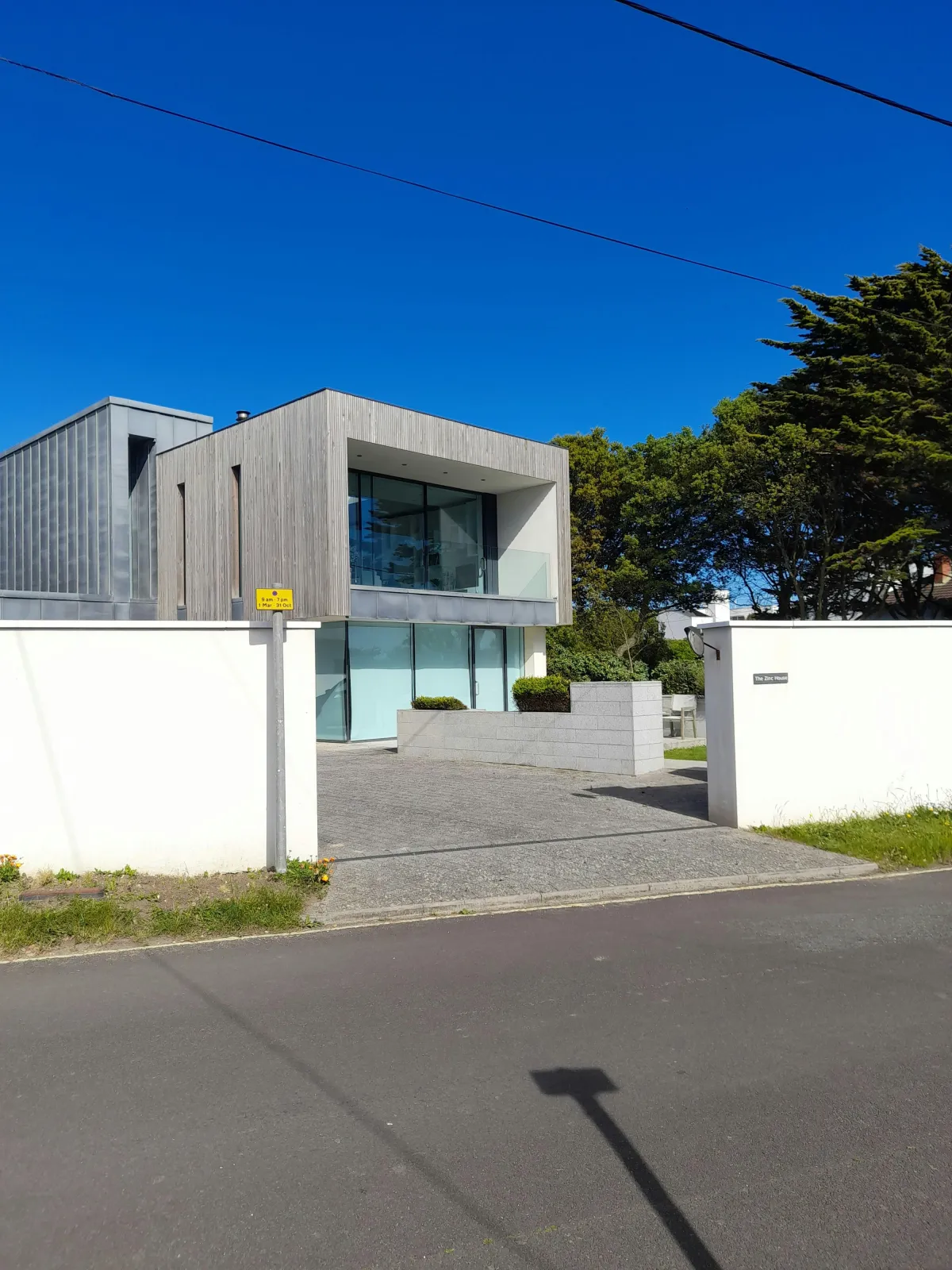
Explore Modern House Plan Styles for Your Dream Floor Plan
Modern house plan styles combine contemporary aesthetics with functional layouts, making them a popular choice for Houston homeowners seeking custom floor plans that reflect both personal taste and practical needs. From clean-lined minimalism to rustic-modern farmhouses, these designs adapt to climate, lifestyle, and site conditions while offering opportunities for customization.
In this guide, Custom Builder Connection explores the most sought-after modern styles, including modern farmhouse, mid-century modern, minimalist, contemporary, and barndominium designs. We’ll highlight the defining features of each style, outline core architectural elements, and share how to select the right plan based on your lot, household needs, and long-term vision. You’ll also learn how our vetted network of architects and builders can bring your chosen style to life—ensuring a seamless process from concept to completion.
Key Takeaways
Modern house plan styles combine contemporary design with functional layouts.
Popular styles include modern farmhouse, mid-century modern, minimalist, contemporary, and barndominium.
Style selection should consider lifestyle, lot size, climate, and future adaptability.
Customization ensures your floor plan fits your specific needs and preferences.
Houston trends often include climate-smart features and strong indoor-outdoor connections.
Custom Builder Connection connects you with vetted professionals to bring your modern home vision to life.
What Are the Most Popular Modern House Plan Styles?

Modern house plan styles offer a range of looks and layouts that combine contemporary design principles with practical living solutions. These styles balance clean lines, open spaces, and functional flow, while often drawing inspiration from historical influences. For example, a modern farmhouse pairs rustic materials with streamlined forms, while mid-century modern emphasizes indoor-outdoor harmony. Understanding these options helps homeowners choose a design that matches their lifestyle, site conditions, and long-term goals.
Modern Farmhouse: Blending Rustic Charm with Contemporary Simplicity
The modern farmhouse combines the warmth of traditional rural architecture with the clean lines of modern design. Key features include:
Board-and-batten siding or weathered wood accents for rustic character.
Steep gable roofs with minimal ornamentation for a clean silhouette.
Large black-framed windows that invite abundant natural light.
Open-concept living areas centered around a welcoming kitchen island.
This style delivers a comfortable, family-friendly feel while maintaining a refined, modern look—making it versatile for both casual and formal living.
Mid-Century Modern: Creating Seamless Indoor-Outdoor Living
Mid-century modern architecture is known for its simplicity, functionality, and strong connection to nature. Hallmarks of this style include:
Open floor plans with seamless transitions between living, dining, and kitchen areas.
Flat or low-pitched roofs for a horizontal profile.
Floor-to-ceiling glass walls and sliding doors to blur the boundary between indoors and outdoors.
Natural materials like teak, stone, and brick for texture and warmth.
The result is an airy, light-filled space that supports casual living while embracing its surrounding landscape.
Minimalist Homes: Prioritizing Functionality and Visual Clarity
Minimalist homes focus on efficiency, open space, and an uncluttered aesthetic. Defining characteristics include:
Rectilinear forms with flat roofs and clean façades.
Built-in storage to maintain open, clutter-free spaces.
Neutral color palettes paired with natural textures like concrete, wood, or steel.
Flexible rooms that can adapt to different functions over time.
This style prioritizes quality over quantity, creating a calming environment where every element serves a purpose.
Contemporary Design: Evolving with Modern Trends and Technology
Contemporary house plans reflect today’s architectural innovations and evolving lifestyles rather than one set historical style. Features often include:
Varied roof shapes such as flat, sloped, or butterfly.
Mixes of materials like glass, metal, and engineered wood for dynamic facades.
Sustainable design elements such as solar integration and rainwater harvesting.
Adaptable interiors with movable partitions and multi-use rooms.
Contemporary homes are flexible and forward-thinking, often incorporating emerging technology and eco-friendly practices into their design.
Barndominiums: Industrial-Style Living with Flexible Spaces
A barndominium combines the structure of a barn with modern residential living. Common elements include:
Steel-frame construction with exposed trusses for an industrial edge.
Open layouts that allow for expansive workshop or studio spaces.
High ceilings and loft areas to maximize vertical space.
Durable exterior finishes for long-lasting performance.
This style is especially appealing for live-work arrangements, hobby enthusiasts, and homeowners looking for a bold, customizable design.
What Are the Key Architectural and Design Elements of Modern House Plans?

Modern house plans share a set of core design attributes that define functional performance and aesthetic cohesion. These elements influence spatial flow, structural systems, and exterior composition. Below is a comparative overview of prominent modern styles and their signature design features.
This table illustrates how each style’s roof shape, fenestration, and material palette inform both the home’s visual identity and its performance under Texas climate conditions. Notably, sustainable glazing and passive design elements often bridge across these approaches.
Which Design Elements Define Modern Farmhouse Homes?
Modern farmhouse homes hinge on blending rustic heritage with refined geometry. Key design elements include:
Contrasting Textures: Smooth stucco or board-and-batten siding paired with stone or shiplap accents
Defined Entry Porticos: Covered porches with substantial beams that frame the entrance
Symmetrical Layouts: Balanced floor plans featuring centrally located kitchens and living rooms
Exposed Structural Details: Interior beams or trusses that highlight craftsmanship
These elements support welcoming, adaptable floor plans that transition gracefully from formal to casual living.
What Are Common Features in Mid-Century Modern Floor Plans?
Mid-century modern plans consistently feature:
Open Circulation Paths that eliminate unnecessary hallways
Clerestory Windows to introduce daylight without compromising privacy
Integrated Built-Ins such as shelving and seating that enhance storage without clutter
Seamless Transitions to patios and courtyards for extended living areas
By focusing on functional transparency and modular elements, these plans foster a sense of effortless comfort.
How Do Minimalist Designs Prioritize Functionality and Space?
Minimalist designs employ:
Integrated Storage hidden behind flush panels to preserve clean lines
Multifunctional Rooms that adapt to office, guest, or exercise use
Neutral Backdrops accented by warm wood or subtle color to avoid visual distraction
Passive Ventilation Strategies such as cross-flow windows for energy efficiency
This emphasis on purposeful simplicity ensures each square foot delivers tangible utility.
What Exterior Trends Are Popular in Contemporary Homes?
Contemporary exteriors often showcase:
Mixed-Material Facades combining metal, glass, wood, and concrete for layered interest
Cantilevered Volumes that create floating effects and sheltered outdoor zones
Green Roof or Living Walls to extend vegetation coverage and improve insulation
Integrated Canopies and Pergolas for sun control and connection to outdoor living
These trends reflect an ongoing desire for environmentally attuned, visually dynamic exteriors that complement open interior layouts.
What Design Features Are Typical in Barndominiums?
Barndominiums stand out through:
Clear-span Interiors free of load-bearing partitions that maximize open floor area
Metal Roof Panels with high-performance coatings for durability in humid climates
Lofted Mezzanines for private retreats or storage above the main living space
Exposed Steel Trusses that contribute an industrial aesthetic
These features deliver cost-effective construction while offering spacious, customizable interiors.
Choosing the Right Modern House Plan for Your Lifestyle and Budget

Finding the perfect modern house plan means balancing your site’s characteristics, your family’s needs, and your financial comfort. By approaching the decision with a structured plan, you can narrow your options and ensure your design works for both your lifestyle and your long-term goals.
Step 1: Assess Your Lot Characteristics
The size, shape, and orientation of your lot will guide the design possibilities. Consider:
Lot size and shape to determine your home’s footprint.
Orientation to maximize natural light and manage heat gain.
Zoning restrictions that affect height, setbacks, and building coverage.
Step 2: Define Your Lifestyle Requirements
Think about how you live now—and how that might change in the future. Identify:
Essential spaces such as a home office, guest suite, or entertainment room.
Indoor-outdoor connection for entertaining or enjoying Houston’s climate.
Flexibility for spaces that can adapt to new uses over time.
Step 3: Establish a Realistic Budget
Your budget should reflect both design aspirations and practical considerations. Factor in:
Material choices that fit your style and durability needs.
Complexity of design, as intricate rooflines or custom features can increase costs.
Local labor and supply conditions, which can influence timelines and pricing.
Step 4: Prioritize Customization Potential
Choose a floor plan that can grow and change with you. Look for:
Room adjustments or optional wings to add more space.
Porch or deck configurations for outdoor living.
Design flexibility for future upgrades or style changes.
How Modern Floor Plans Adapt to Different Family Sizes
Modern homes are designed with adaptability in mind. They can include:
Variable bedroom wings for easy expansion or repurposing.
Dual primary suites for multigenerational households.
Scalable communal zones for gatherings of any size.
Bonus spaces—like lofts or finished basements—for hobbies, play, or work.
Understanding Cost Considerations in Houston
In the Houston market, several factors can affect build costs for modern homes:
Material availability—steel framing or imported finishes may carry higher costs.
Climate adaptations—enhanced insulation, high-performance glazing, and raised foundations for flood zones.
Site conditions—soil type may determine slab-on-grade versus pier-and-beam foundations.
Design complexity—cantilevers, multi-level roofs, and custom detailing may increase structural requirements.
The Value of Customization
Personalizing your modern home ensures it truly reflects your lifestyle. Options include:
Tailored ceiling heights and window sizes for unique light patterns.
Smart home integration for comfort, efficiency, and security.
Universal design features for long-term accessibility.
Exterior finishes that complement your neighborhood’s character.
With the right plan and team, your modern home can be as distinctive as your vision.
How Houston Trends Influence Modern House Plan Styles

Houston’s unique mix of climate conditions, lifestyle preferences, and an active housing market plays a major role in how modern house plans are designed and built. From material selection to layout adaptations, local factors shape homes that are both stylish and functional in the region’s hot, humid environment.
Popular Modern Design Trends in Houston
Modern home design in Houston often blends style with resilience and comfort. Common trends include:
Elevated living areas built on piers to reduce flood risk.
Extended outdoor living spaces with covered patios, summer kitchens, and seating zones.
Multi-zone HVAC systems for precise temperature and humidity control.
Biophilic design features such as interior courtyards, green walls, and lush landscaping for natural connection.
These trends reflect Houston homeowners’ desire for homes that work year-round—offering comfort, durability, and seamless indoor-outdoor living.
Climate-Responsive Design Considerations
Houston’s climate demands smart design solutions to maintain comfort and efficiency. Local adaptations often include:
North-south building orientation to minimize heat gain.
Deep overhangs and louvered shading to block harsh afternoon sun.
Thermal mass materials like concrete or masonry to regulate interior temperatures.
High-capacity dehumidification integrated into mechanical systems.
By incorporating these strategies, modern homes in Houston can stay cooler, reduce energy use, and create healthier living environments.
Examples of Modern Homes in Houston
Several standout custom homes in the Houston area highlight how modern design adapts to local needs:
A steel-frame minimalist residence with expansive glass walls and seamless indoor-outdoor living.
A modern farmhouse with a wraparound porch and passive solar orientation.
A mid-century modern-inspired home featuring a roof deck overlooking a landscaped courtyard.
A barndominium that combines spacious living quarters with a fully equipped workshop.
These examples show how diverse modern styles can be functional and visually striking when adapted to Houston’s environment.
What Are the Benefits and Considerations of Building Modern House Plans?

Building a modern home offers distinct advantages but also requires awareness of unique challenges.
What Are the Advantages of Open Concept Floor Plans?
Open concept layouts improve spatial flow and social interaction by:
Eliminating barriers between kitchen, dining, and living areas for clear sightlines
Enhancing natural ventilation and daylight distribution
Providing flexible furniture arrangements to suit evolving needs
Promoting a sense of spaciousness even on compact lots
These benefits support communal living while allowing personalized zoning through furniture placement or movable screens.
How Do Modern Designs Incorporate Sustainability and Smart Features?
Modern plans often integrate:
High-performance insulation and low-e glazing to reduce energy consumption
Photovoltaic panels and solar water heaters for renewable energy generation
Smart thermostats and lighting controls to optimize comfort and efficiency
Rainwater collection systems and native landscaping for water conservation
By embedding these features, homeowners gain long-term operational savings and environmental stewardship.
What Are Common Challenges When Building Modern Homes?
Challenges can include:
Higher initial costs for specialized materials and engineered components
Coordinating complex roof geometries and structural details with contractors
Managing maintenance of large glazed areas and flat roof systems
Ensuring quality craftsmanship for seamless minimalistic finishes
Anticipating these challenges early helps mitigate budget overruns and quality issues.
How Do Modern Styles Support Different Lifestyles and Lot Types?
Modern designs flexibly adapt to:
Urban infill lots with vertical layouts and rooftop terraces
Suburban acreage with sprawling single-story footprints
Mixed-use live-work spaces integrating home offices or studios
Aging-in-place modifications like zero-threshold entries and door-widening
This versatility makes modern plans suitable across diverse site conditions and personal circumstances.
Frequently Asked Questions
What defines a modern house plan style?
Modern house plans emphasize clean lines, open layouts, large windows, and functional spaces that adapt to contemporary living needs.
How do I choose the right modern style for my home?
Consider your lot size, climate, family needs, and desired indoor-outdoor connection. Each style offers unique benefits suited to different lifestyles.
Can modern house plans be customized?
Yes. Floor plans can be adjusted to include additional rooms, modified layouts, or specific materials to suit your preferences and site conditions.
Which modern styles are popular in Houston?
Modern farmhouse, mid-century modern, minimalist, contemporary, and barndominium designs are all in demand due to their adaptability and climate-friendly features.
How does Custom Builder Connection help with modern home projects?
We match you with vetted architects and builders experienced in your chosen style, guide the design process, and coordinate your project from start to finish.
Conclusion
Selecting the right modern house plan style is about more than choosing an architectural look—it’s about finding a design that supports your daily routines, complements your site, and aligns with your long-term goals. Whether you’re drawn to the charm of a modern farmhouse, the seamless flow of mid-century modern, the simplicity of minimalism, the adaptability of contemporary design, or the versatility of a barndominium, the right style will balance beauty with functionality.
At Custom Builder Connection, we connect Houston homeowners with experienced architects and builders who specialize in modern designs. Our vetted network ensures your project benefits from expert guidance, skilled craftsmanship, and a process that keeps your vision front and center. From the first design sketch to the final walk-through, we’re here to help you create a home that is modern, functional, and uniquely yours.


